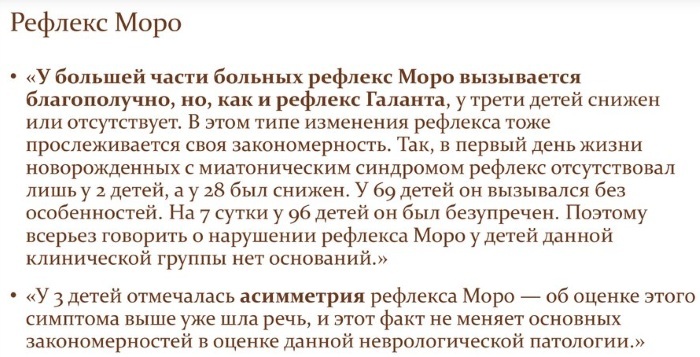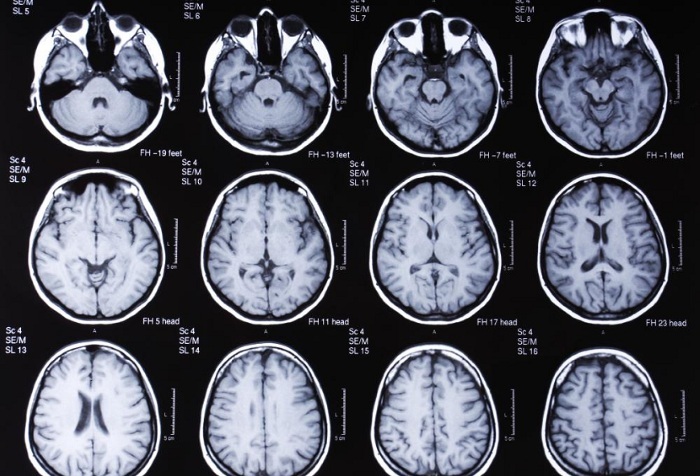Polymorphic disorder, observed during the pronunciation of sounds - this is one of the varieties of dyslalia or burr, as this pathology is also called. The disease is manifested by a disorder of the pronunciation of some individual sound groups.
A similar diagnosis is made to children when they reach 5 years of age and with preserved intelligence, the integrity of the organs of articulation and innervation. Larting is a common pathology in speech therapy, observed in more than 55% of children under the age of 6, in 30% of children under 8 and only in 1% of the adult population.
Record content:
- 1 Views
- 2 Stages and degrees
- 3 Symptoms
- 4 Reasons for the appearance
- 5 Diagnostics
- 6 When to see a doctor
- 7 Prophylaxis
-
8 Correction methods
- 8.1 Speech therapy assistance
- 8.2 Home gymnastics
- 8.3 Speech therapy massage
- 9 Possible complications
- 10 Dislalia video
Views
Violation of sound pronunciation is a common ailment that is divided into several separate forms. All of them are described in the table below.
| Burnt classification | Peculiarities |
| Organic | It is characterized by a congenital and acquired structure of a defect in the articulation apparatus with adequate regulation by the highest activity of the nervous system. |
| Functional | This is an acquired ailment that forms in cases where the morphological pathology of the nervous system and organs of the speech apparatus is excluded. There are two types of it: motor and sensory. The first is characterized by a neuromolecular shift in the center of pronunciation, with the lips, tongue and cheeks moving with some difficulty. Sensory is manifested due to a shock in the parietal region, which is responsible for the reproduction of sounds.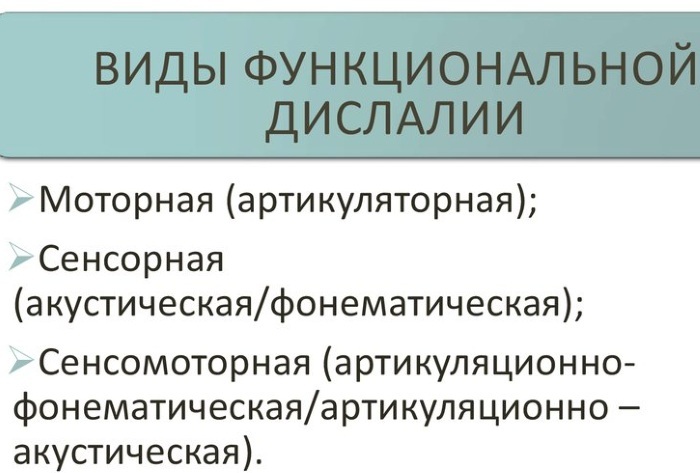
|
| Physiological | This form is also called transient, and it manifests itself in most of humanity, it easily passes on its own in children under 5 years of age. |
| Monomorphic | This is one of the simplest violations of the pronunciation of certain sounds, for example, only whistling sounds. |
| Polymorphic | This is one of the complex forms of the disease when a person cannot pronounce more than 4 sounds correctly and they can all be from separate sound groups. |

Dislalia is an ailment of a passive and active oral speech apparatus, which includes lips, tongue, teeth, cheeks, palate. But pronunciation disorders can also occur due to structural and functional diseases.
That is why dyslalia is:
- articular-phonetic;
- acoustic-phonemic;
- articular-phonemic.
Also, this ailment in speech therapy is classified by phonetic type and depends on the problematic sound pronunciation:
- Sigmatism is a more common form where a person has trouble pronouncing sibilant and hissing sounds.
- Violation in the pronunciation of sonorous sounds. There are 4 distinct forms: Lambdaism, Pralambdaism, Rotacism, Pararotacism. The first form is characterized by difficulty with the pronunciation of the sound "l" and "l", and rotacism is characterized by the sound "r".
- Disturbances in the pronunciation of back-lingual sounds, such as "k", "ky", "g" and "z" and others.
- Yottacism is characterized by violations in the pronunciation of letters containing the sound "y", "I", "u".
- Voiced defect when a person replaces voiced consonants with voiceless ones and vice versa.
- A softness defect when there is an unconscious replacement of soft consonants with hard ones and vice versa.
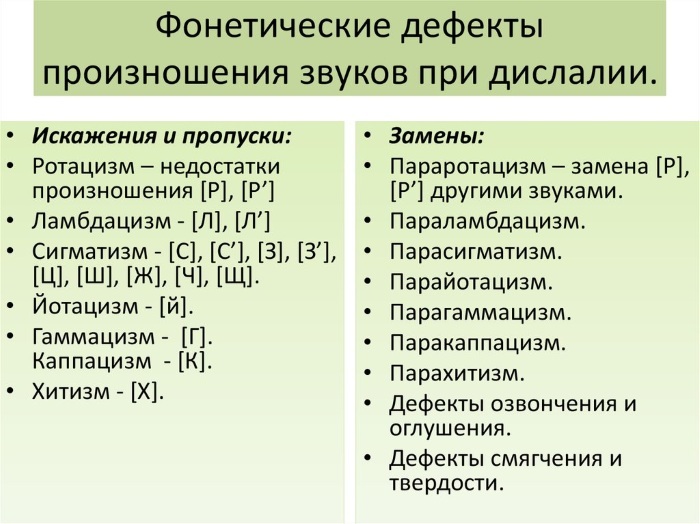
In addition to types and forms, specialists in violation of the pronunciation of sounds are divided into several levels:
- This is when the child is completely unable to pronounce sounds. The child is unable to independently pronounce the sound in phrasal speech, in separate words, in isolation.
- The child can isolated correctly pronounce the sound in words and even when repeating phrases, but can distort or skip in owls and phrases.
- The child pronounces a sound in isolation, but mixes it with another close in articulation or sound.
It is very important to accurately establish the level of the disease, because the nature of the specialist's further work depends on this: put sound - the first level, automate - the second level, differentiate with another sound - the third level.
Stages and degrees
Speech therapists distinguish two stages of polymorphic dyslalia:
- Simple. It is characterized by the same type of violation, when the child cannot correctly pronounce only vowels or consonants, as well as consonants and vowels at the same time.
- Complex. The child has a violation in the pronunciation of more than 4 sounds.
Symptoms
Polymorphic impairment of sound pronunciation is an acute form of the disease that manifests itself in the form of disturbances in normal human behavior. Symptoms are constantly growing every day.
Observing a person with similar disorders, you can notice:
- unstable mood, changes several times a day;
- speech becomes devoid of any meaning;
- listening to the patient, you can notice that he periodically carries delirium;
- hallucinations, the patient says that someone or something touches him, hears extraneous sounds and voices.
Often, such disorders strongly resemble paranoid psychosis, depressive disorders, schizophrenia, and delusional disorder.
People with disabilities experience disorientation, but self-identification remains. The patient's concentration of attention decreases. There is a partial clouded consciousness.
Symptoms of violations of pronunciation of sounds can be represented by substitution, omissions, confusions and distortions of sounds:
- Skip. If the sound completely drops out in any part of the word.
- Replacement. Persistent substitution of one of the sounds for another.
- Mixing. The child constantly confuses two correctly pronounced sounds in the stream of speech.
- Distortion. This is an irregular pronunciation, the use of sounds that are completely absent in the phonetics of the Russian language.
Reasons for the appearance
Polymorphic dyslalia can manifest itself in children due to functional and mechanical disorders.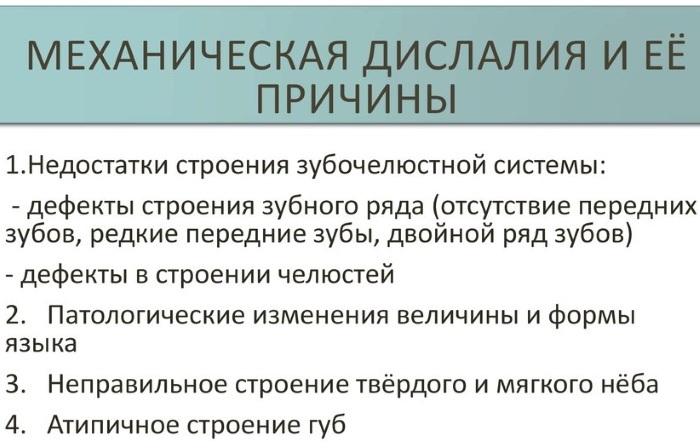
The main causes of the disease are:
- incorrect structure of the language;
- congenital pathologies, which include: cleft palate, cleft lip;
- malformed bite, uneven dentition or if teeth are missing;
- narrow or, on the contrary, high sky;
- underdevelopment of bones in the face;
- short bridle.
Also, dyslalia can manifest itself due to functional changes:
- delay in the development of speech;
- genetic predisposition, when the jaw and articular apparatus are not properly developed;
- the child imitates the speech of other people;
- mental retardation;
- if family members speak different languages;
- lisping imitation of the child's speech;
- if phonemic hearing is poorly developed;
- the state of health is weak: immunity is weak, there are frequent colds;
- learning foreign languages by children under 5 years old.
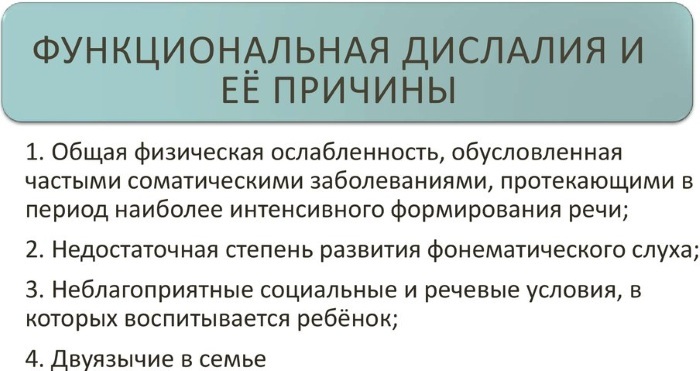
Polymorphic impairment of sound pronunciation is an ailment that can result from physiological problems. This phenomenon is common in preschool children and it is associated with a not yet mature articulatory apparatus.
Parents of children under 6 years old should not worry. But older children should be able to pronounce all sounds correctly, if there are problems, then you should seek help from a speech therapist.
Diagnostics
Polymorphic dyslalia or pronunciation disorder is an ailment that must be properly distinguished from other speech defects. More often, parents are worried about the fact that their peers will laugh at their child, who does not pronounce certain sounds well. That is why they come to see a speech therapist.
The reason may not necessarily be in dyslalia, other problems with speech are often observed:
- dysarthria;

- phonetic and phonemic underdevelopment;
- general speech underdevelopment.
Only a speech therapist can make an accurate diagnosis and establish what is the reason for the incorrect pronunciation.
He will carry out several stages of diagnosis:
- Initially, phonemic hearing is checked and functional tests are performed. To do this, the child must repeat all the words pronounced by the speech therapist or tell what is shown in the picture. Words and pictures are specially selected so that all sounds located at the beginning, middle and end of words are covered.
- Clarifying tests are required additionally, thanks to which it is possible to exclude any other speech defects.
- If the case is neglected, the speech therapist may require a child's card, which describes the entire history of the disease. Additionally, conclusions from narrow specialists may be required: a psychologist, an otolaryngologist, a neurologist.
After all the tests, the speech therapist draws up a plan for further activities with the child. The plan is individually selected for each child, because the stages of the disease and the type can be different. It is imperative to determine in what sequence the pronunciation of sounds will be corrected.
Often, pronunciation disorders can be part of other more complex speech disorders, such as dysarthria, alalia and others, therefore it is important to undergo a comprehensive examination and make a diagnosis in time in order to prevent complications.
When to see a doctor
If a child under the age of 5 mispronounces this or that sound, then this should not cause any alarm in adults. You can ask for help from a speech therapist who will help your child learn to put the tongue correctly and pronounce sounds clearly and accurately. If, after the start of classes, the results are not noticeable, then it is better to undergo a comprehensive examination in order to exclude the development of serious pathology.
Prophylaxis
Polymorphic violation of sound pronunciation is not the final sentence, because preventive methods will help to avoid such a diagnosis.
For prevention, you should:
- from the very first years of life, actively develop the child's speech;
- do not lisp with the baby, but pronounce all the words clearly in conversation with him;
- read as many books as possible to the child;
- develop fine motor skills;

- actively develop the baby intellectually;
- conduct games that help develop phonemic hearing;
- motivate the child to pronounce each sound correctly and clearly;
- if anatomical changes are observed, then they should be treated on time.
If the parents notice that the child cannot pronounce any sound correctly, do not try to help him on his own. Sometimes this kind of help can make the situation worse, and even an experienced technician will take a long time to fix it.
All problems should be identified before school and eliminated. Many children with the wrong pronunciation of sounds can have problems learning the school curriculum, academic performance and peer relationships.
Correction methods
After the cause of the appearance of speech defects is precisely determined, it will be possible to accurately determine the correct path of treatment. For example, mechanical dyslalia can only be cured with surgery. The operation will help remove anatomical defects that interfere with the normal functioning of the speech apparatus.
Complex dyslalia in preschool children is treated with:
- articulatory gymnastics;
- development of hearing sensitivity;
- speech therapy massage;
- micromotor development;
- techniques for correct breathing during a conversation.
Speech therapy assistance
After the first visit to a speech therapist, the specialist develops an individual work plan for each child. Classes should be held at least 2 times a week, and preferably up to 3-4 times, then the result will appear faster. The child's parents should also help by regularly performing a special set of exercises at home.
Speech correction by a speech therapist takes place in several stages:
- Preparatory. The speech therapist conducts classes that help to better develop memory, thinking and attention processes. The child learns to compare and conduct independent analysis. The specialist helps to develop phonemic perception, teaches sound analysis and develops speech breathing. At this stage, the child performs exercises that help to pronounce sounds correctly: lips, cheeks, tongue, palate and jaws.
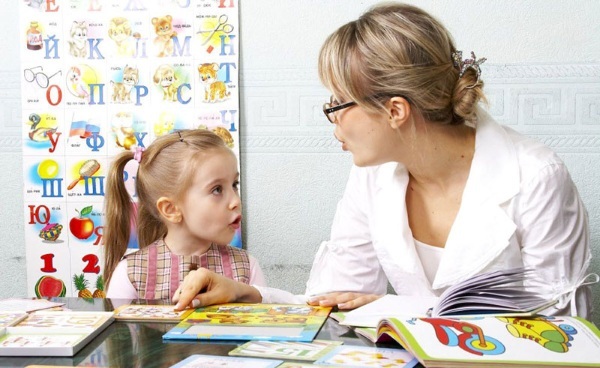
- At the next stage, the specialist teaches the child to put the speech correctly. Exercises take place in a playful way, if necessary, additional speech therapy probes can be used. You can play no more than 2 sounds at the same time.
- Sound automation. The child must learn to automate sounds in words, syllables, phrases and texts, and a little later in live speech. To consolidate the result, parents need to repeat the exercises daily at home.
- The final stage. The child must learn to distinguish the new learned sound from the one with which he previously replaced it. This is necessary in order to exclude a relapse of the disease, so that the burr does not return.
To achieve results and cure polymorphic dyslalia, you need to exercise regularly for six months. As practice shows, the speech therapist manages to easily cope with the problem, and the child will be able to speak correctly at school.
But parents need to remember that only the harmonious work of adults, a specialist and a positive atmosphere will prevent complications.
Home gymnastics
Parents with children can do simple gymnastics at home every day:
- move your tongue to the left, right, then clockwise and back, stretch your tongue to the nose and chin;
- fungus exercise - suck the tongue to the palate, and then open and close the mouth;

- lip movement - up, down, smile, vibrate, pull into a tube;
- close, open the mouth as wide as possible, stretching the ligaments of the jaw;
- pronounce tongue twisters.
Exercises can be performed in the morning and in the evening, taking only 5-10 minutes.
Speech therapy massage
This type of massage helps to stimulate the articulatory muscles, has a relaxing effect, improves blood flow in the soft tissues, trains the muscles that are responsible for the formation of the speech apparatus, forcing them to function consistently and correctly.
The massage reflexively affects the entire lymphatic system, improves the flow of lymph through the vessels. The elasticity of muscle fibers, their strength and volume of contractile function are significantly increased, their activity is better restored after exercise.
Massage is performed in a warm, ventilated room. Massage is carried out in cycles of 10, 15 or 20 sessions, it is better to carry out the procedure every other day. After a month's break, you can repeat the procedure.
During the massage, the child can lie on his back with a cushion under his neck, or you can also half-sit in a chair with a high headrest.
It is more effective to use the classic type of massage, which involves light stroking, kneading, rubbing, vibration. You can massage with your hands, a soft-bristled toothbrush, rubber spatulas and others.
There are also acupressure, hardware and probe types of massage, but they must be carried out by a specialist so as not to harm.
Possible complications
If you do not start timely treatment, then violations in the pronunciation of sounds can become a manifestation of a mental illness, for example, schizophrenia. A similar development of events is indicated by persistent symptoms that appear regularly for 3 months. The earlier therapy is started, the more favorable the prognosis will be.
Polymorphic impairment of sound pronunciation is an ailment that can be easily cured without any complications and consequences. During the period of acute disorder, the patient is socially disoriented, can be dangerous for himself and others, so he needs constant supervision and help.
Polymorphic disorder is a common problem in young parents. Children with pronunciation disorders require timely correction, otherwise the ailment can provoke a lag in the development of the speech function.
If there is even the slightest sign of illness, you need to urgently seek advice from a speech therapist. The specialist will select a set of classes and will be able to improve the quality of the child's speech without consequences and complications.
Dislalia video
About the diagnosis of dyslalia:

